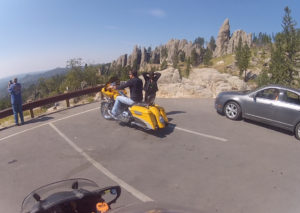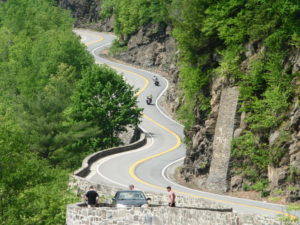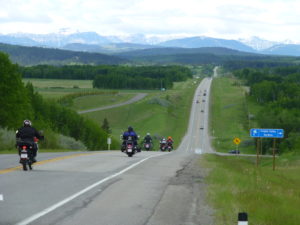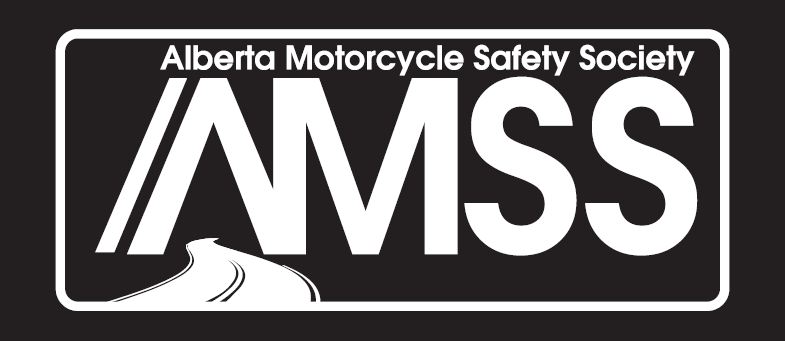Advice For (new) Riders – Part 2
Training & Learning
By: R. Bruce Thomas & Friends**
In his 2016 book Far and Wide: Bring That Horizon to Me!, the late Neil Peart used only eight words to acknowledge the ever-present risks which every rider should be aware of, while articulating a safety-conscious approach to riding that I’ve always tried to adhere to: “Whatever happens, it must never be my fault”.
So how do we do that? With all that happens in the dynamic environment that exists where we want to ride, how do we make sure we aren’t at fault?
Motorcycling requires both physical and mental skill and being proficient requires continuous training to be prepared to deal with the unexpected. Lifelong learning enables a rider to get the most out of the sport. In short, you never lose when pouring money into your head. You may be competent – training makes you better.
A rider training course is high on most of my friend's lists, whether that is initial training or a refresher course every few years. Having a qualified instructor provide feedback on your technique will ensure you aren’t doing the wrong things right. An old saying is you should never feel ashamed at having to unlearn a bad habit.
The next best thing to taking a course is some good winter reading to keep the necessary skills at the front of your mind. A very good book is “The Motorcycle Safety Foundation’s Guide to Motorcycling Excellence”. It contains chapters on basic skills, drinking and riding (DON’T), riding gear, group riding, traction, cornering, plus more. The book encompasses lessons that the MSF has been teaching riders since 1973 and is available from the MSF web site.

be prepared for anything while you are riding
Two more books that should be part of your lifelong learning regular required (re-)reading are “Proficient Motorcycling: The Ultimate Guide to Riding Well”, and “Mastering the Ride: More Proficient Motorcycling”. Both of these books were written by David L. Hough, author of the Proficient Motorcycling series in Road Rider Magazine and Motorcycle Consumer News from 1981 – 1999. There are great pictures, graphs, drawings and, of course, easy-to-understand text explaining riding skills and accident avoidance techniques gleaned from Hough’s 30+ years of commuting to work. If you want a smaller format that you could perhaps carry with you when you go on trips, check out Hough's Street Rider's Guide: Street Strategies for Motorcyclists. Hough was inducted into the AMA Motorcycle Hall of Fame as a journalist in 2009 and the chairman of the Induction Committee, Dan Rosene, noted that Hough’s “books should be a mandatory read for every motorcyclist, from novice to expert." I agree whole-heartedly.
When Hough retired, Ken Condon took over the Proficient Motorcycling column, and he has a couple of very good books on the market as well. Riding in the Zone: advanced techniques for skillful motorcycling and Motorcycling the Right Way: Do This, Not That: Lessons From Behind the Handlebars are two more excellent resources to help a rider improve, be safer, and get more enjoyment out of motorcycling.

it's be visible AND where all the gear
Riding responsibly means wearing All The Gear, All The Time. Your training should have engrained ATGATT in your brain and you should always listen. If you don’t put the gear on, no matter how short the ride or how hot the weather, whatever happens will be your fault. Pavement doesn’t care. Automobiles have crumple zones. You are the crumple zone on a motorcycle, so wear the protection.
My buddy Jon feels very strongly that the best way to start a riding season is to have a weekend at the track. Getting a lot of seat time when you aren’t in the usual mix of drivers who aren’t thinking about motorcycles early in the season will get the rust

a track day can prepare you for playing in traffic
off your skills before you do venture out to play in the traffic.
An empty parking lot is also a great place to practice your slow skills and emergency maneuvers. You needed those skills when you took your Class 7 Driver Exam (you do have your Motorcycle Licence, right?), and you need them to be sharp every time you throw a leg over the bike. Well-trained reflexes are quicker than luck is another old saying you should be mindful of.

following a friend can be a great way to improve
While riding is generally a solo endeavor (you and your bike), it is greatly enhanced by riding with friends. As a new rider you will learn a lot faster if you have someone to ride with. In my late teens my friends and I would head to Jasper every winter weekend and I learned to ski the Black Diamond runs at Marmot by watching an experienced friend ski half way down, attempting to follow his line while he watched, getting some on-hill feedback, and then leading the way down the remaining portion of the hill with him following. Find a friend to ride with and don’t always follow, but when you do follow, do so at your own pace. Always arrange a place to meet so that you aren’t tempted to keep up with other riders. Check online forums for your make/model of bike, search the internet for riding clubs, or ask your dealer if you can post a note on their bulletin board looking for people to ride with.

when riding in a group, always ride at your own pace
And that has to be the last point. Ride. As much as you can and as often as you can. Practice makes perfect. Put all the training and learning that you've done to good use. You don't need to hit 10,000 hours but try to cut the grass, buy groceries, and do the laundry during the week and get out every weekend, rain or shine. That's what it takes to make sure you are doing all you can so that whatever happens, it's not your fault.

traveling with friends can make a trip more memorable
Just before I sign off on this piece I’ll suggest one more book. It’s not a training book like the previous ones I’ve mentioned, but you will learn a lot about being a motorcyclist. Melissa Holbrook-Pierson’s The Perfect Vehicle: What It Is About Motorcycles is an engaging look at the machines and the people who ride them and reasons they do.
Finally, while you wait for all of these books to arrive, I’ll point you at some recent web content that also makes good reading for, what Nick Ienatsch calls, the low-hour riders. I like that as opposed to saying new riders, but it’s too late to change the name of this series.
Beyond the Classroom
Part 1: Clutchless Upshifts and Don't Look Away Now
Part 2: Fancy Footwork and eliminating the ugly clunk
Part 3: City Cover and the Headlight Weave
Part 4: Garage Time
Part 5: Lean Angle
Part 6: After a crash - audio interview
Part 7: Best Practices
Part 8: How bad do you want to ride good?
**After responding to a tweet (“What advice would you give a new rider?”) from the Texas Motorcycle Safety and Awareness Campaign (@LookLearnLive) last August, I sent the question to my riding friends to get a greater perspective. Their responses have helped form this 3-Part series.
For reference sake, I’ve got friends who have:
- raced on the track,
- ridden on the Bonneville Salt Flats,
- completed the Iron Butt Rally (some more than once!),
- ridden 100’s of thousands of kilometers,
- survived serious crashes
- done gnarly things in the dirt,
- removed a wheel and repaired a flat tire on the side of the road,
- many other useful skills.
